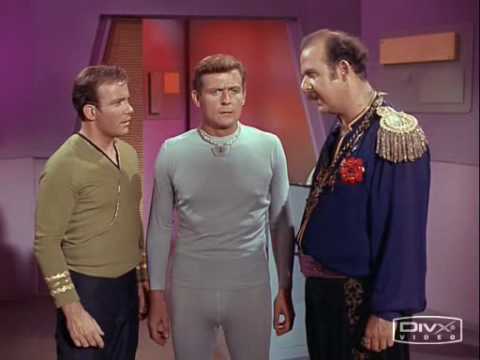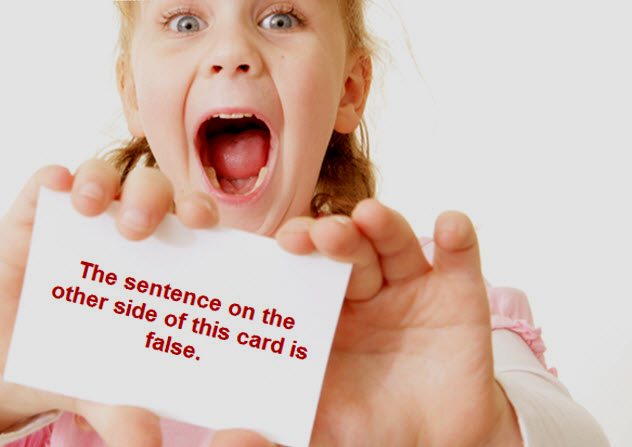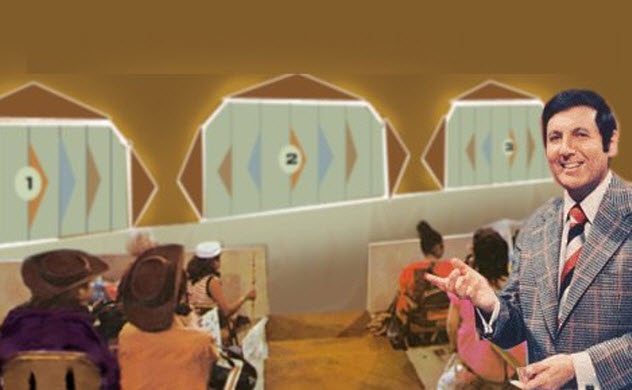Here’s a classic example of a fun little brainteaser called “The Paradox of Omnipotence” that’s been puzzling minds for centuries: Could God, being infallible and omnipotent, make a rock so heavy that even He could not lift it? How can an entity be omnipotent (all-powerful) and create something which negates His own omnipotence? Another incarnation of the same question goes, “Could Jesus microwave a burrito so hot that even He could not eat it?” You can think of the answers to these paradoxical questions while we cover 10 of the most insanely fun logical puzzles of all time. (Don’t worry, we picked easy ones that just about anybody can understand.) Spoiler Alert: If you haven’t seen the classic Star Trek episode “I, Mudd,” don’t watch the video in entry nine. You’ve been warned.
10 The Heap
Let’s travel back to the fourth century BC and start with Eubulides of Miletus, the man who is credited as the inventor of paradoxes. Eubulides came up with four fun brainteasers that require careful thinking to solve. The Heap (aka The Sorites Paradox) is the first of these classical paradoxes, and it’s a question of degrees: If a man has zero hairs on his head, we say he’s bald. However, a man who has 10,000 hairs on his head is not considered to be bald. But what if we add a single hair to the head of the man with zero hairs? He would still clearly be bald. Now let’s say that a man has 1,000 hairs only. But the strands are evenly spaced and really thin. Would this man be bald or not bald? Would you consider a single grain of wheat a “heap of wheat?” Definitely not. How about two grains? Still, probably not. So when do a few grains or a few hairs end and a whole heap or baldness actually begin?[1] The problem is one of vagueness. Where does one description end and another begin?
9 The Liar Paradox
The first sentence of this paragraph is a lie. Stop and think about that sentence for a second. Is it true? Or a lie? A true lie? This is called The Liar Paradox, and it’s also from the time of Eubulides. It’s straightforward and fun and takes the form of one short statement: “This sentence is a lie.” Another incarnation of the paradox is: “Everything I say is false.” The problem with both statements: They’re true, but they contradict themselves if that is so. How can a true statement contradict itself? Wouldn’t that make it both true and untrue at the same time? If either quotation above is really a lie, then that statement is true and contradicts itself. Even worse, if every other statement previously uttered by the speaker is false, then this one sentence, “Everything I say is false,” is a true sentence and contradicts itself.[2] So, what do you think? Is the sentence a lie?
8 Limited And Unlimited
The next paradox comes from a man named Zeno of Elea who lived circa 495–430 BC. He came up with quite a few brainteasers which are still puzzling to this day. Have you ever wondered about the similarities we see in nature from small to large? Have you ever thought that maybe, just maybe, our whole universe is really just a tiny atom in the universe of some much larger entity? Zeno wanted to show that the idea of a plurality of things (which all exist side by side in time and space) brought with it some serious logical inconsistencies. The Limited And Unlimited Paradox displayed this. Does one thing exist or many? What separates one thing from the next? Where is the line? This is also called The Paradox of Density, and let’s put it a little differently. This works with multiple objects, but we’ll start with just two. If there are two things, what separates them? You need a third thing to separate the two. The Paradox of Density takes place on many different scales, but you get the basic idea. So, is there just one massive entity called the universe that contains indistinguishable matter of varying densities (air, the floor, a tree, etc.)? Is all matter perpetually divisible? Or if we divide matter into objects small enough, will we eventually reach the object so small that it cannot be divided?[3] The smartest scientific minds of the human race still grapple with these questions today.
7 The Dichotomy Paradox
This classic gem, The Dichotomy Paradox, also comes from Zeno. From this brainteaser about distance and motion, Zeno drew the conclusion that all motion is actually impossible. Like the Limited And Unlimited Paradox, this deals with division that becomes never-ending. Let’s say that you decide to walk to the store and buy a soda. For you to get there, you’ll have to cross the halfway point. No problem, this makes sense. But from the halfway point, you’ll have to next cross the halfway point of the halfway point (three-quarters of the way from your house to the store). Then you’ll have to cross the halfway point of that distance and the halfway point of the next smaller distance. So wait a minute. If you keep dividing your trip into halfway points, you’ll never actually be across the halfway point . . . ever. How is this possible? You know that you can go to the store and get a soda. But when do you actually cross the last halfway point (where there are no more halfway points)?[4] Zeno seemed obsessed with this question of where we draw the line. When are you actually inside the store?
6 Achilles And The Tortoise
Another brainteaser comes from Zeno in the form of Achilles and the Tortoise, which is similar to The Dichotomy Paradox. In this puzzle, Achilles races a tortoise. To be a nice guy (demigod), Achilles gives the tortoise a 100-meter (328 ft) head start because Achilles is an extremely fast runner and the tortoise is . . . well . . . a tortoise. As soon as the gun fires and the race begins, Achilles quickly closes in on the slow-moving tortoise. In no time, Achilles has crossed the 100 meters (328 ft) of the head start that he gave the tortoise. Simultaneously, the tortoise has traveled 10 meters (33 ft). So Achilles still hasn’t caught the tortoise. But again, Achilles will quickly close in, crossing the additional 10 meters (33 ft). During this time, however, the tortoise has traveled another 1 meter (3 ft). By this logic, Achilles can never truly catch the tortoise, can he?[5] How can this be possible? Every time he gets closer, the tortoise goes further. Does this mean that motion itself is impossible even though we experience it daily? That’s what Zeno declared. We’ll let you decide.
5 The Paradox Of Inquiry
The Paradox of Inquiry (aka Meno’s paradox) was featured in Plato’s dialogues. Meno gets into a discussion about virtue with Socrates that leads to a peculiar question about how we learn. If we don’t know what we don’t know, how do we know what to look for? In other words, if we want to find out something that we don’t know, how do we know what to ask? Even if we happen to encounter what we don’t know by chance, we wouldn’t know it and wouldn’t know to inquire. This would mean that we never actually learn anything by asking questions—which is obviously absurd. Questioning is the fundamental premise of science and the first step in the scientific method. As Meno said, “And how will you inquire into a thing when you are wholly ignorant of what it is? Even if you happen to bump right into it, how will you know it is the thing you didn’t know?” Socrates rephrased the paradox this way: “A man cannot search either for what he knows or for what he does not know. He cannot search for what he knows—since he knows it, there is no need to search—nor for what he does not know, for he does not know what to look for.”[6] If we know the answer to the question we ask, how do we learn anything from asking?
4 The Double Liar Paradox
Let’s move up to more modern times and toy with a fun extension of The Liar Paradox called The Double Liar Paradox. First dreamed up by mathematician P.E.B. Jourdain, this brainteaser goes as follows: Take a flash card or a piece of paper. On one side, write: “The sentence on the other side of this card is true.” Now flip it over and write on the other side: “The sentence on the other side of this card is false.”[7] If the second sentence is true, then the first sentence is false. (Flip the card.) Here, you end up moving into an indefinite changing of sides—side A to side B on the card. But if the sentence you first wrote is false, as the second sentence claims, then the second sentence would also be false. Thus, both sentences are right and wrong at the same time. Have fun with that one.
3 The Monty Hall Problem
This one can be seen on game shows everywhere. Let’s say there are three doors. Behind each of two doors is a brick, but one door masks $1 million. You get to pick a door and see if you win the million. Let’s suppose you choose Door A and hope for the million. Then the game show host opens another door at random to see if you won or lost. The host chooses Door B, and it reveals a brick. With Door B out of the way, the one-third odds just got a lot better. You’re left to choose between Door A and Door C. You can even switch to Door C now if you want. Since you don’t know what is actually behind your door, you’re still picking between two doors. So your odds are 50/50, right? Door A, Door C . . . it’s one out of two . . . can’t get any simpler than this. Wrong. At this point, it sounds counterintuitive to say that you have a two-thirds chance of getting the $1 million if you switch doors and a one-third chance if you stay put. But it’s true. Can you figure out why?[8]
2 The Barber Paradox
Another more modern brainteaser popularized by philosopher Bertrand Russell is Russell’s Paradox, a variation of which is called The Barber Paradox. The puzzle is simple: A barber says he’ll shave any man who does not shave himself and all men who do not shave themselves if they come to be shaved. The question is: Does the barber shave himself? If he does, then he no longer shaves all men who do not shave themselves because he shaves himself. If he does not shave himself, then he does not shave all men who do not shave themselves.[9] While intricate, this paradox has to do with the categories and lists we make and the relationship of the list itself to the items on the list. Did you write down your grocery list as an item on your grocery list?
1 Schrodinger’s Cat
Does the Moon actually exist when you’re not looking at it? How do you really know? Moving on to the best brainteaser, which is arguably not a paradox, let’s talk about Schrodinger’s cat. It begins with the idea that we take a cat and place it in a soundproof box. Now, without lifting the lid to observe the cat, how do we know whether the cat is alive or dead? Physicist Erwin Schrodinger came up with this thought experiment in 1935. The dominant idea of the day was the Copenhagen interpretation of quantum mechanics: Until we observe a particle or thing, it exists in all states possible. Our observation is what determines its state. In a more sophisticated version of the experiment, you place a cat into a box with a jar of poison, a hammer, and a Geiger counter along with just enough radiation that there’s a 50/50 chance of the Geiger counter being set off within the hour. Science can tell us a lot about each particle of the cat and the odds that the particle may have decayed radioactively (and contributed to the triggering of the Geiger counter). But science cannot tell us anything about the state of the cat until it’s actually observed.[10] So if the hour goes by without observing the cat, the animal is theoretically both alive and dead—which we all know is absurd and impossible. This was a major blow to the dominant theories of the time. Even the most hard-core physicists began to rethink their ideas about quantum mechanics. In a nutshell, every time you look at something (a chair, for instance), you get a definite answer as to its state. (It is there.) When you turn your head, you can only get probable chances of whether it is still there or not. Yes, it’s safe to say that the chair didn’t get up and walk away. But without observation, you’ll never really know. So, at what point can the things we observe be certain to exist (or exist in the state we observe them)? Here’s a simpler version of the same paradox: “If a tree falls in the woods and no one is there to see it, did it really fall?” Niels Bohr, another physicist from that time, would say that the tree did not fall. In fact, it never existed in the first place—until we looked at it. Our most proven science says this. Freaky, huh? My hobbies are the darker side of humanity and philosophy, and I love writing about both. I currently run several Facebook pages, including “Serial Killer Memes” and “Murderworks Horror.”
























